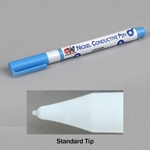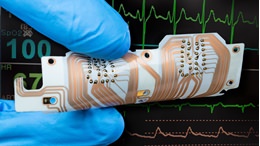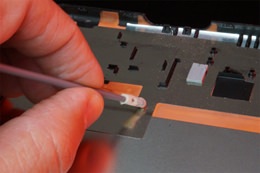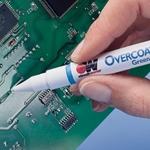CircuitWorks Conductive Pens
Draw highly conductive traces, jumpers and shielding
CircuitWorks® Conductive Pens make instant highly conductive silver traces on circuit boards and are used in
CircuitWorks Conductive Pens are available in 3 types of inks:
- Silver Conductive Pen (CW2200STP, CW2200MTP) - Highly conductive and the most popular option. Available with either the standard tip (CW2200STP) or micro tip (CW2200MTP).
Conductivity - 0.02-0.05 ohms/sq/mil - Silver Flex Conductive Pen (CW2900) - Also silver-based, and engineered for flexible PCBs. Only available with the standard tip.
Condictivity - 0.05-0.15 ohms/sq/mil - Nickel Conductive Pen (CW2000) - Lower cost nickel-based ink. Only available with the standard tip.
Conductivity - 1.0 – 1.5 ohms/sq/mil
Features & Benefits
- Quickly creates conductive silver traces
- Valve pen tip for easy applications
- Solderable at low temperatures
- Superior electrical conductivity
- Dries in minutes at room temperature
- Choice of Micro Tip (MTP) for fine lines or Standard Tip (STP) for wider lines
Applications
- Repairs traces
- Links components
- Makes smooth jumpers
- Shields electronics
| TDS | |
| REGS | |
| SDS | |
| Categories |
| Shelf Life | 15 mo. |
|---|---|
| Specs | ANSI/IPC J STD-001, IPC-7711 |
| NSN | CW2200MTP - 6850-01-506-5662 |













